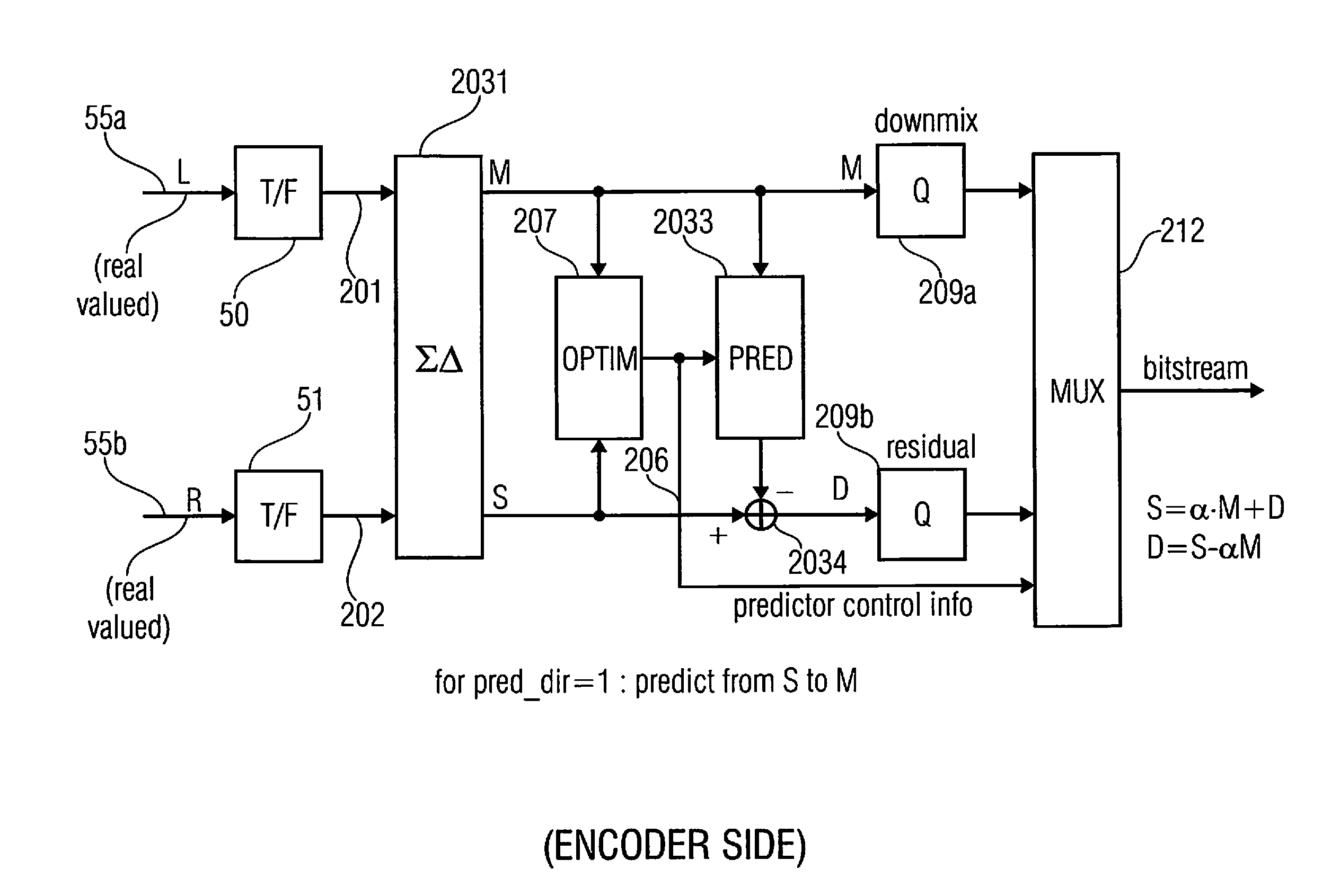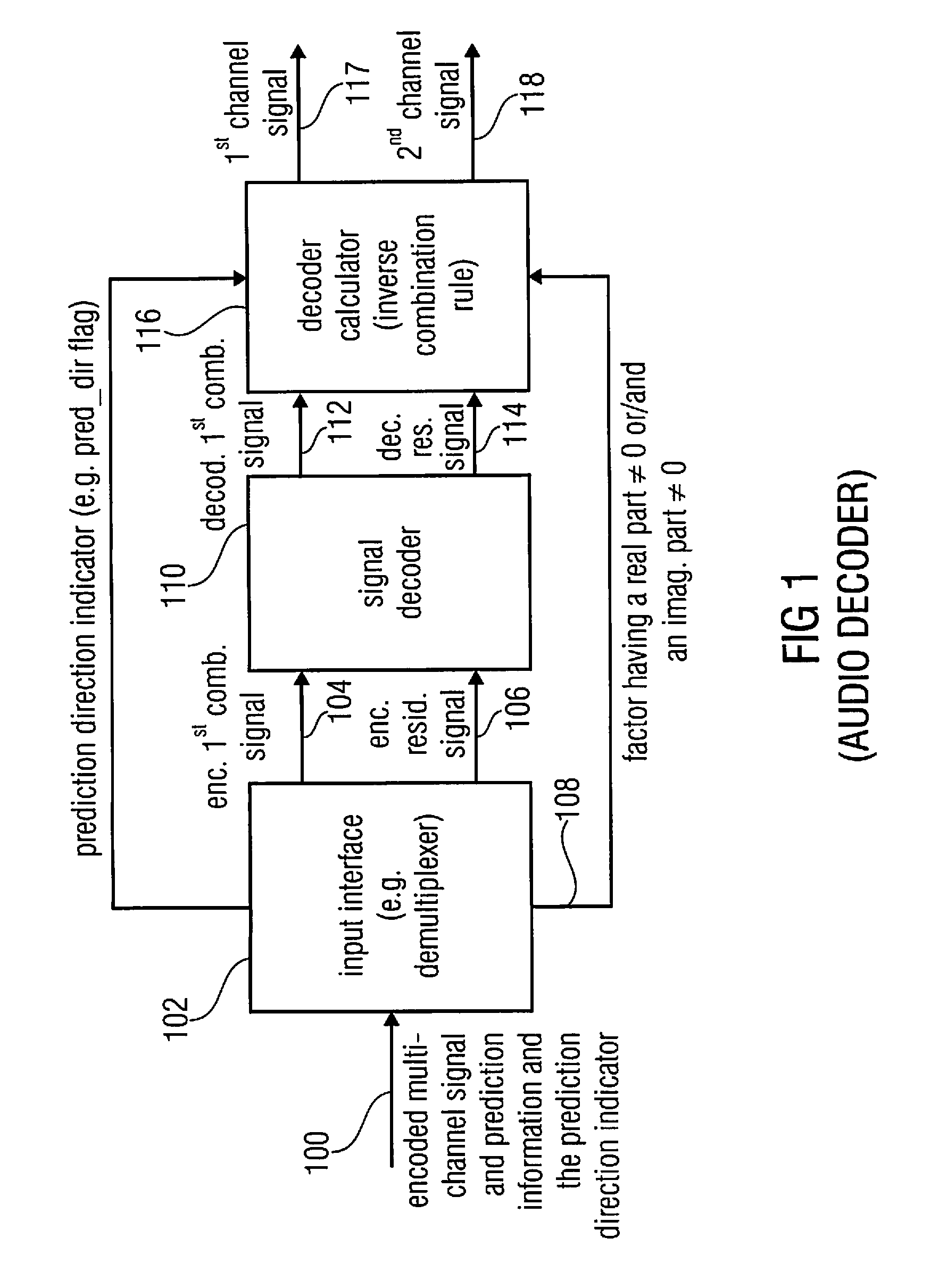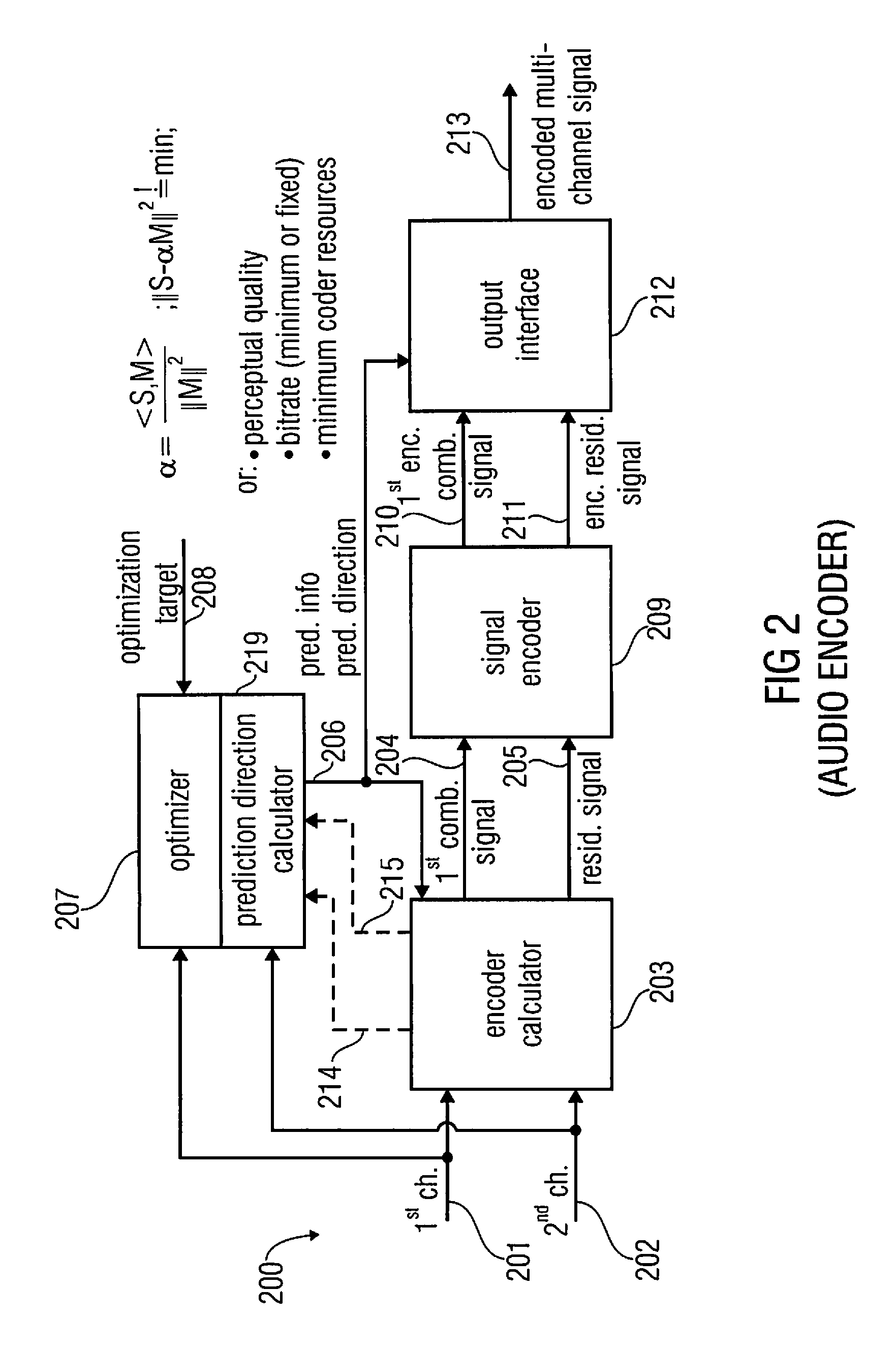Audio or video encoder, audio or video decoder and related methods for processing multi-channel audio or video signals using a variable prediction direction
- Summary
- Abstract
- Description
- Claims
- Application Information
AI Technical Summary
Benefits of technology
Problems solved by technology
Method used
Image
Examples
Embodiment Construction
[0060]FIG. 1 illustrates an audio or video decoder for decoding an encoded multi-channel audio signal obtained at an input line 100. The encoded multi-channel audio signal comprises an encoded first combination signal generated using a combination rule for combining a first channel signal and a second channel signal representing the multi-channel audio signal, an encoded prediction residual signal and prediction information. The encoded multi-channel signal can be a data stream such as a bitstream which has the three components in a multiplexed form. Additional side information can be included in the encoded multi-channel signal on line 100. The signal is input into an input interface 102. The input interface 102 can be implemented as a data stream demultiplexer which outputs the encoded first combination signal on line 104, the encoded residual signal on line 106 and the prediction information on line 108. Advantageously, the prediction information is a factor having a real part no...
PUM
 Login to View More
Login to View More Abstract
Description
Claims
Application Information
 Login to View More
Login to View More - R&D
- Intellectual Property
- Life Sciences
- Materials
- Tech Scout
- Unparalleled Data Quality
- Higher Quality Content
- 60% Fewer Hallucinations
Browse by: Latest US Patents, China's latest patents, Technical Efficacy Thesaurus, Application Domain, Technology Topic, Popular Technical Reports.
© 2025 PatSnap. All rights reserved.Legal|Privacy policy|Modern Slavery Act Transparency Statement|Sitemap|About US| Contact US: help@patsnap.com



